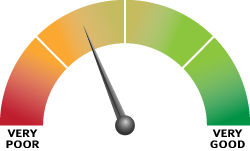
Coastal development pressure on the Great Barrier Reef
You are viewing an archived copy of the 2017 report.
Key finding
Changes to coastal habitat and reductions in connectivity are having an increasing effect on the region's ecosystem.
Great Barrier Reef marine park area (information applies statewide, map locations are for reference only)
Coastal development influences the Great Barrier Reef through both the legacy of past development actions, such as broad scale clearing of catchment for agriculture, and smaller scale current and future actions for agricultural, urban, industrial and island development.
Coastal development activities can include modifying coastal habitats, constructing artificial barriers to flow, exposing acid sulphate soils as well as increasing artificial light and noise pollution.
It diminishes the capacity of coastal habitats to provide ecosystem services such as recycling nutrients and capturing sediments, reduces connectivity between freshwater and marine habitats and affects coastal scenic vistas.
While some further modification of catchment habitats, and consequential impacts on the reef, is projected to continue the primary focus of management is to address the ongoing impacts from poor catchment water quality resulting from past clearing and ongoing land management practices.
More information:
Indicator: Coastal development
Coastal development pressure on the Great Barrier Reef Marine Park Area as reported in the Great Barrier Reef Outlook Report 2014.

See also: Estuarine and marine ecosystems assessment summary.
- Previous Climate change pressure on the Great Barrier Reef
- Next Direct use pressure on the Great Barrier Reef

